
Transcription
"The Pay Off: Me, as an oil pistol piston"
Money. Is it the root of evil, as some believe it to be? It is certainly the center piece in a centrifugal breeze blowing through the prison industry these days. Politicians speak out on the costs to tax payers, though they never seem to directly say how much. For instance, it costs between $60 -- $75,000 per inmate to build new cells and it costs $24,000 per inmate each year just to maintain the present cells inside institutions. It would appear that this is a simple matter of cutting costs by relying on the maintenance of old cells. The problem is, with the rate of recidivism so high; overcrowding has become so much of an issue that there are additional cells desperately needed to house the flood of felons.
When it all boils down to it, the Wisconsin prison system is a furiously pumping oil piston; running well only when there is oil to sustain it. In other words, when there is no funding, the WDOC (Wisconsin Department of Corrections) has to find other ways to keep it operating. There are a number of techniques that can provide what is required. I'm going to reveal to you a few of the options available for me to research.
First, there is Supply and Demand. A clear example of this is seen through the canteen system at almost "all" prison facilities. There are products sold to inmates from the canteen and the process is clearly observed. The items that sell the best get their prices pushed up by small increments every few months. An item, such as (Tone soap) that costs $0.53 in January, ends up costing $0.83 in October. Other snacks and beverages that are hot items, like Now-N-Later candy or Kool-Aid drink mix are other examples of fixed costs that matter the most. If these items are new items and sell well for the 1st few weeks, the prices will increase.
Furthermore, those products that do not sell particularly well, (especially if the purchase of said product isn't regular) - meaning every canteen - then, that item becomes discontinued. To a degree, this also reflects "ELASTICITY", because the whole process allows for the staff running canteen to better determine the demand for products. However, I shall come back to elasticity later.
Next, I want to look at the concept of "MONOPOLY". For an example of this, we can take a peek at the companies in which the WDOC (Wisconsin Department of Corrections) has contracts involving non-institution sold products. I'm talking about the outside vendors that provide products that the WDOC does not sell. There are four companies: Jack L. Marcus; Access Catalog Company; Walkenhorst; and Union Supplies, which we order personal items from. Each one of these companies has a slightly different variety - each selling products that the other company does not. (E.g., Walkenhorst and Union Supply Companies sell a better brand name of shoes and clothes distinguishing them from other approved WDOC firms like Jack L. Marcus and Access Catalog.)
Suppose my "willing to pay" for a more durable, reliable, long lasting item is worth paying its maximum price - what gain do I have from this purchase? Well, because of my housing situation, surprisingly, my gain will differentiate. See, in prison, most prisoners would rather pay the maximum price for... let's say, a 2-pack of (grey) Knocker boxer briefs from Walkenhorst at the price of $6.99; before a 2-pack of (white) Andrew Scott boxer briefs from Access Catalog for the price of $5.15.
Walkenhorst sells a more reliable material that'll last longer, with a great number of color choices to choose from. On the other hand, Access Catalog sells a less reliable material that'll "not" last as long as the material from Walkenhorst. And Access also has limited color choices - white... isn't a best seller. But as an inmate, a potential buyer, we are not willing to pay for cheaper material that will not last. Our financial difficulties aren't the best in prison. So, we look for quality material that goes beyond the limits of withstanding wear and tear. We don't know when we will be able to purchase the next pack of boxer briefs. The gain, for prisoners, would be "which material will last beyond its limit" by quantity demand.
Also, because the Institutions themselves do not sell these items, this shows the WDOC works in tangent with the four companies as a monopoly. When this occurs, I believe that these four firms engage in collusion. Because collusion is better off in profits, other firms now have an induced action to collude if they can - especially if sale plans are a carefully choreographed monopolistic competition.
Now, I do have a theory regarding "game theory". There is a model RGCI goes by. This model is viewed as a tug for positive externalities by way of advantage. The Institution sells inmates a non-patent laundry card, at a fixed rate of $2.50; this card being comparative to coins at a laundry mat, with the washing & drying machines being the economy's factor of production.
To say the least, all laundry cards are complementary to laundry detergent. To wash one load of my personal clothes, which is probably twice a week, I must get this card signed and dated by the unit wing officer on duty. The laundry card is good for 5 loads. At $2.50 for 5 loads, the average fixed cost of one signature is worth $0.50 ($2.50/5 = $0.50).
Overall, the result is that I end up paying $0.84 per load to wash my clothes in prison - $0.34 for laundry detergent, (since washing powder costs $5.45 for a 26 oz. box of Tide - which will get me 16 loads), plus $0.50 per wash from the laundry card. This means that on a given week, I spend $1.68 to wash/dry one load of personal clothes two times weekly and $87.36 (annually). RGCI practices a dominant strategy making this non-patent laundry card strictly about business. This relation is parallel to the concept of "game theory".
Elasticity. For 20 years, I've been an insulin dependent Type-1 diabetic. The price elasticity of demand to manage my diabetes is in flux. The facts about diabetes are that diabetes is not just one disease, but several different diseases that all cause the same basic problem: too much sugar in the blood.
(Biology of Diabetes)
The sugar in my blood is called glucose. All cells in my body use glucose to make energy to live. All sugar and starches I eat are made into glucose. Glucose moves around in my body in the blood to get the cells where it is used. My insulin shots are a hormone that helps move glucose out of the blood into the cells. Insulin, which I take 4/5 times a day (depending on my accucheck readings), is made in the pancreas - an organ located behind and below the stomach area. Different types of diabetes result from different problems in insulin production and insulin effectiveness.
After 20 years of being a diabetic and using a combination of insulins (Humulin 70/30 and Novolin 70/30), my medical team decided to change my insulin medication, to better help me manage my health, and prep me for "pump therapy" (which is an insulin pump that has a small battery-operated device about the size of a small cell phone. It continuously delivers small amounts of insulin through an infusion line placed under the skin. The infusion set must be changed every few days.) Before I get the pump therapy, I must experiment with other insulins - I'm currently taking "Lantus" (a 24-hour long lasting insulin), with "Regular", a short-acting sliding scale based insulin (sliding scale regulates the 24-hour long lasting insulin). These bottles of insulin are scientifically made. Along with boxes of syringes, finger prickers, alcohol and gauze pads all have a hefty price if not insured.
To be more specific, here's a synopsis of most of my medical expenses under the WDOC -- over the past 15 years. Suppose the Medical Department buys 1,500 (single) syringes for one inmate with diabetes per year, for let's say $1,440.00; 48 bottles of Insulin at $6,000.00; gauzes for $180,00; alcohol pads for $120.00. ($1,440.00 + $6,000.00 + $180.00 + $120.00 = $7,740 annually). Multiply this with the amount of years I've been locked up ($7,740 x 15 years = $116,100).
Would the price elasticity of demand change if my health got worse? Yes. Simple because the demand for the diabetic supplies changes when I start treatment with "pump therapy". (E.g., I have taken 4 shots of insulin a day for 15 years using a total of 21,900 syringes - not including leap years: 4 shots x 365 days x 15 incarcerated years = 21,900 shots) "OUCH!" But, I must do this to live. When the pump therapy starts, due to the infusion line being placed under my skin and changing it every 3 days, a major shift change in syringes and medical supplies will drastically decrease - creating falling prices and also a surplus in syringes and other medical supplies. The pump machine cost $7,500 itself and $200 a month to maintenance it. ($200 x 12 = $2,400 per year to maintenance). After so long, I believe the price elasticity of medical supplies changes the demand along the demand curve when my pump therapy starts.
To see into this even more, consider that I must consume other medications (which have also been a hefty cost over the past 15 years) like, Cholesterol pills, $180.00 x 12 months = $2,160.00 (a year) times 15 is $32,400; Aspirin, $18.00 x 12 months = $216.00 (a year) times 15 is $3,240, High Blood Pressure pills; $110.00 x 12 months = $1,320 a year times 15 is $19,800 and etc., to better maintain my diabetes. And if I tact on what it has "already" cost to house me in a cell, $24,000 x 15 years = $360,000. Along with the 5 surgeries I had on my leg in the sum of $112,000, with "many" trips back and forth to Madison University Hospital -- to see my diabetic specialists and other Doctors over the past 15 years may have costed another $15,000.
Hypothetically speaking, it's not about the "prisoner's dilemma", I think there's a "dilemma with prisoners" that has costed this large amount of money without giving them a second chance as a better citizen. At the very least, pay back what tax payers have already endorsed in by delving deeply into his community as a more positive role model. I am microeconomics for the most part; better yet, an incentive to pumping oil in the prison system. Am I? Who knows! But I do know, in 15 years of incarceration, before this "pump therapy" starts, I'm merely just a drip of oil in the amount of $658,140.00. (This is the number behind the figures) Collectively!
By Inmate: Larry W. Johnson #658,140.00
Other posts by this author
|
2014 jun 26
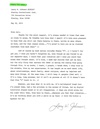
|
2014 jun 26

|
2014 jun 11

|
2014 jun 11

|
2013 may 14

|
2013 may 14
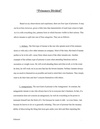
|
More... |
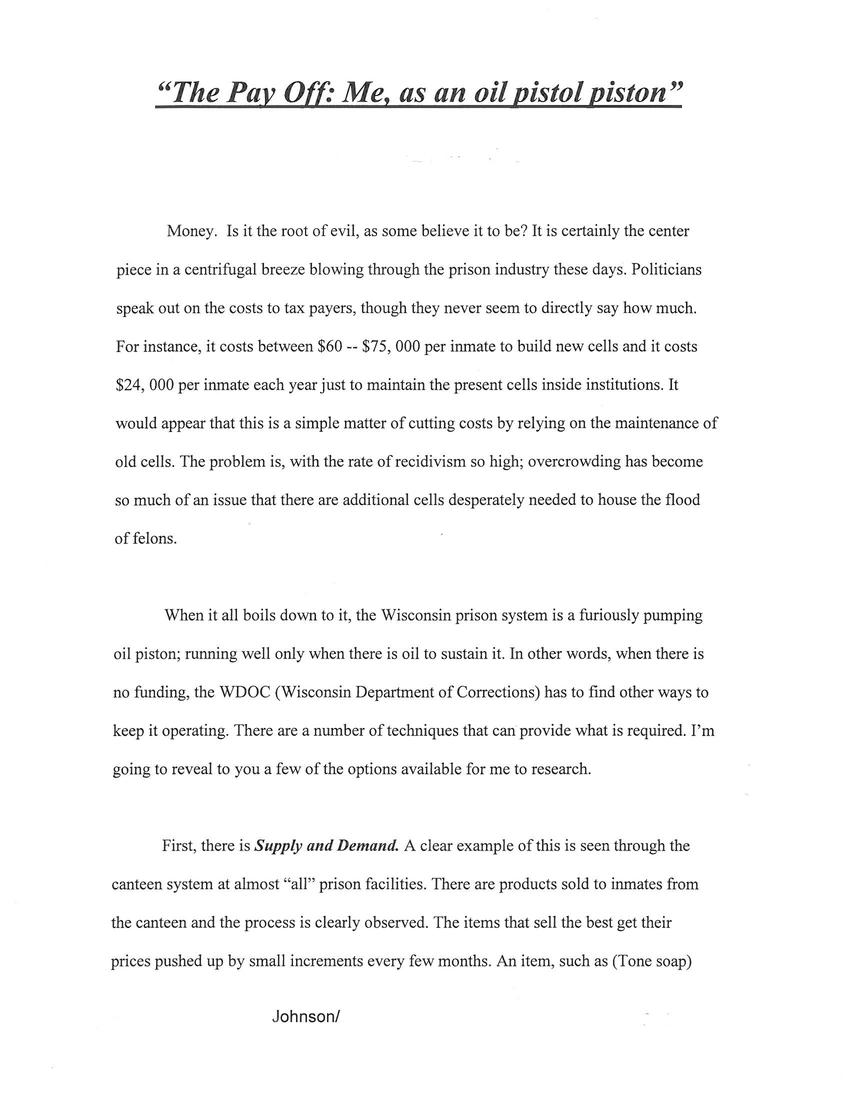

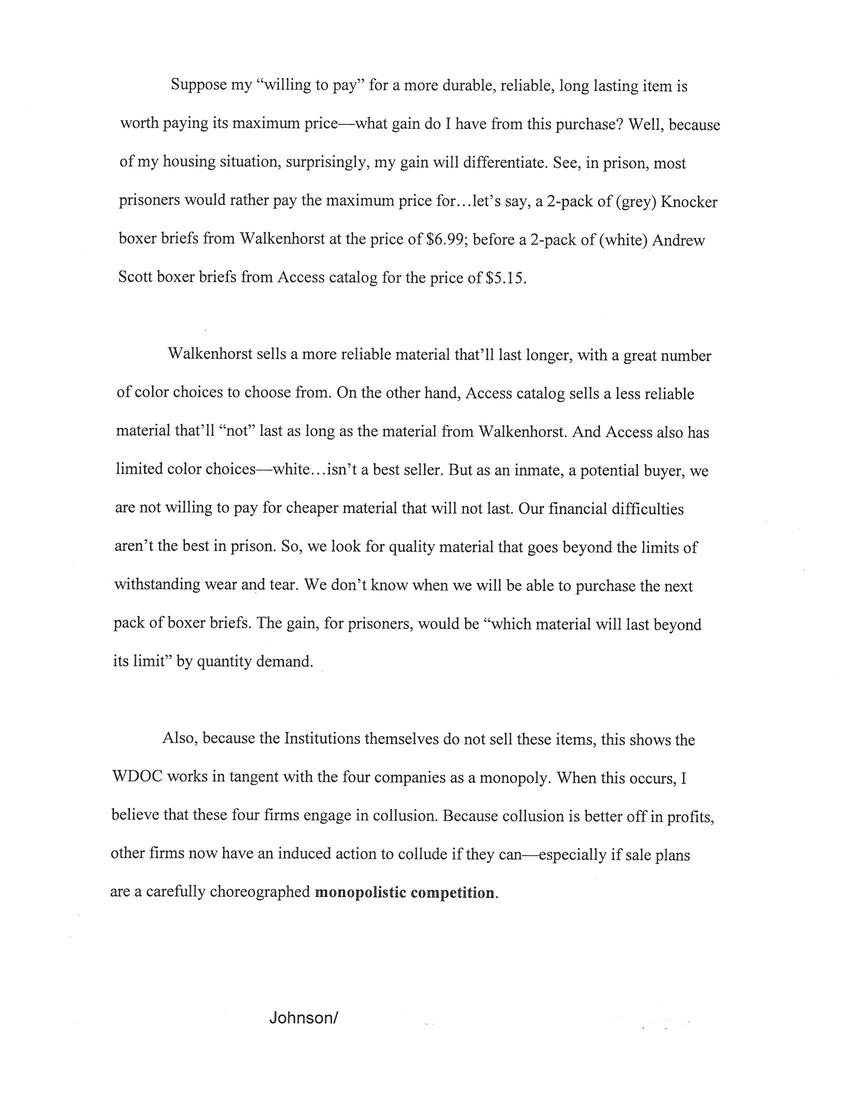
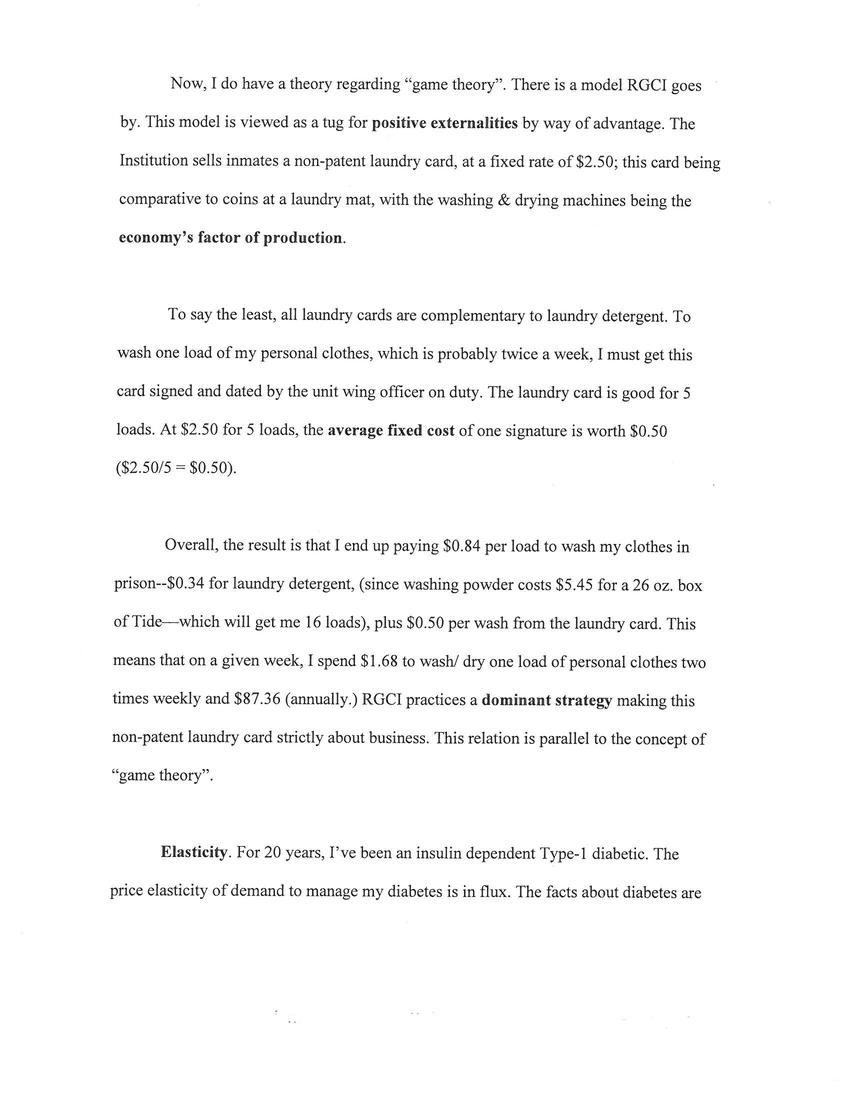
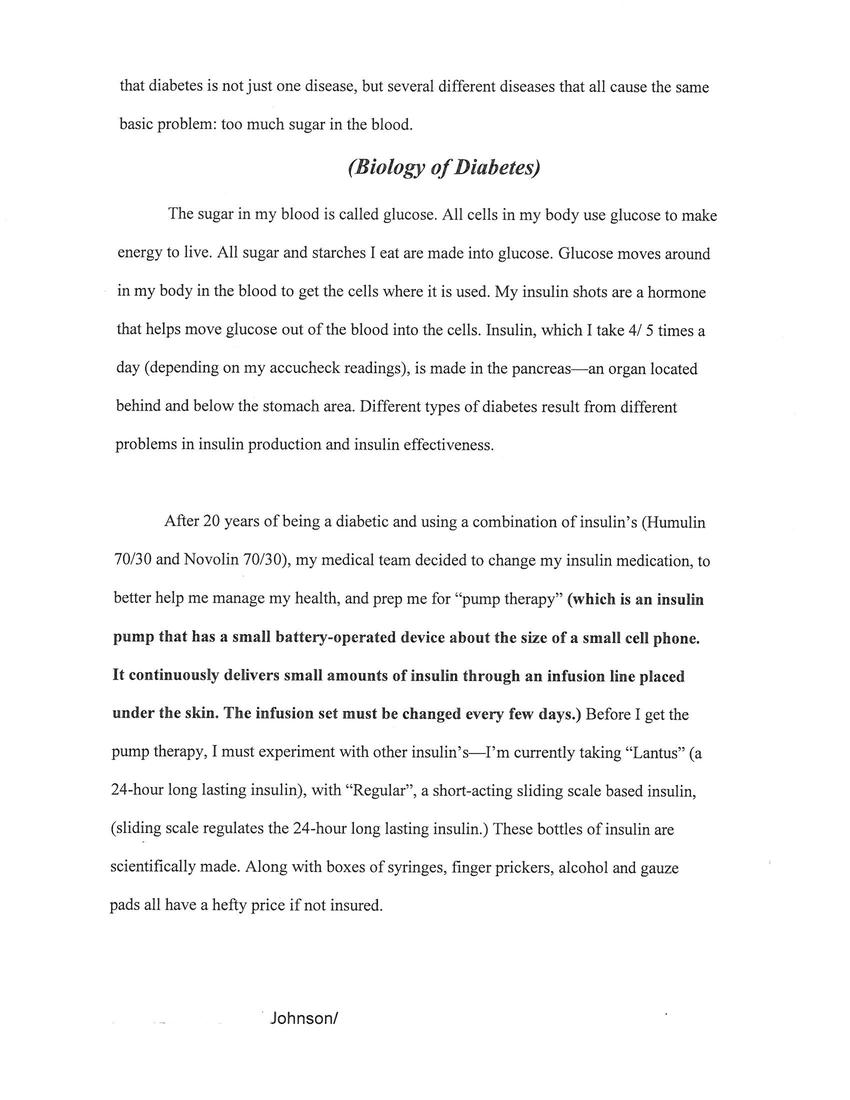
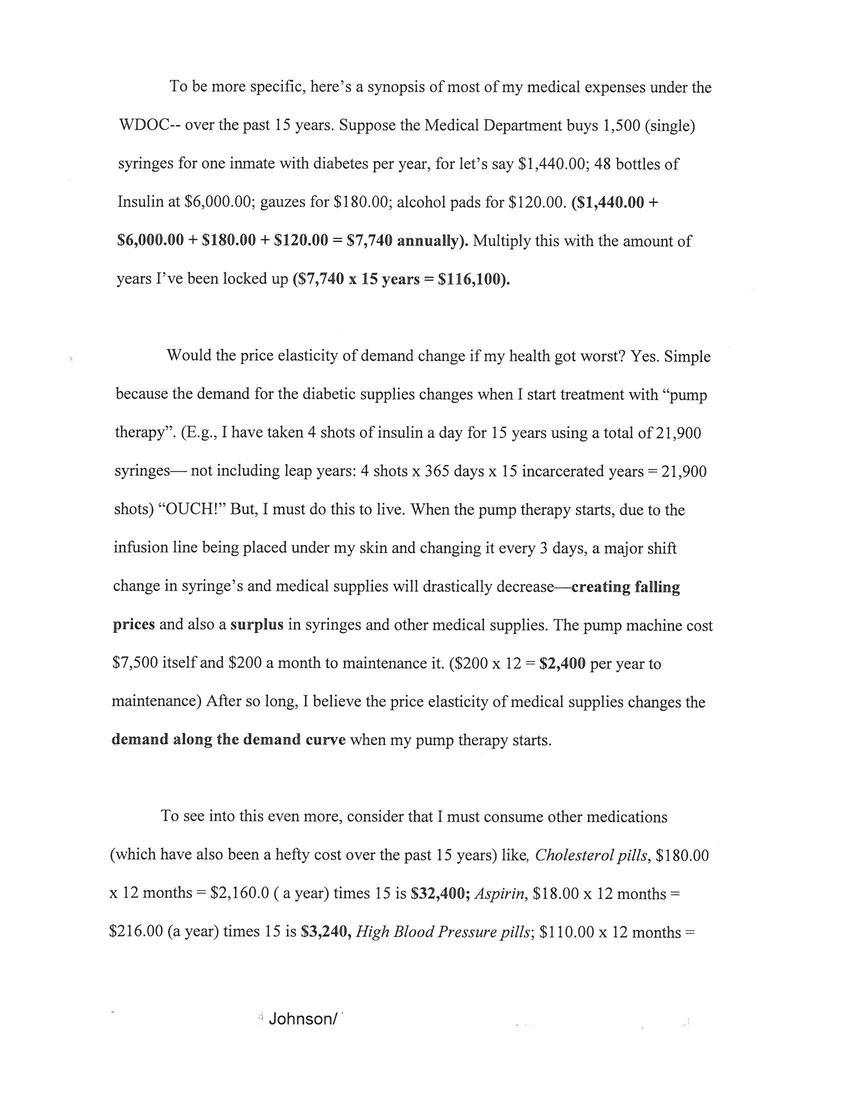

Replies